How to Expertly Design a Functional & Chic Children's Space

If you purchase an independently reviewed product or service through a link on our website, SheKnows may receive an affiliate commission.
Designing a home for adults is one thing, but when it comes to adding a kid-friendly space into a home, a whole new set of challenges arise. Of course, you want it to be a functional space for the kids to learn, create and play but most parents would agree that designing a playspace that is both functional and aesthetically pleasing is no easy feat. That’s why we turned to Manhattan-based Designer Purvi Padia to help understand how to create a playful space for kids that isn’t a giant eyesore for adults.
More from SheKnows
Purvi Padia spent ten years in the beauty and fashion industry before opening her namesake residential interior design firm in 2008. Padia has designed some of the most stunning living spaces in New York City and has the awards to prove it. In 2012, Padia’s design work won her the Best of Remodeling Award from Houzz and in 2020, Padia won the Best of Manhattan Award in the Interior Designer category from the Manhattan Award Program.
We were lucky enough to sit down and chat with Padia recently and she told us exactly how to easily create a fun place for kids that’s not an eyesore for adults. Let’s jump right in with rule number one.
1. Choose aesthetically-pleasing toys
Click here to read the full article.
When speaking with Padia, she explained that one mistake a lot of parents make is thinking everything needs to be stuffed into a closet and hidden. “Rather than trying to just stuff everything away and keep it kind of out of sight, I like to think of making storage solutions part of the design,” Padia told SheKnows. “Certain toys are super cute and you can see them and they can be displayed.”
For example, Padia recently designed this playspace that features gorgeous toys that can easily be left out and also add to the design of the space.
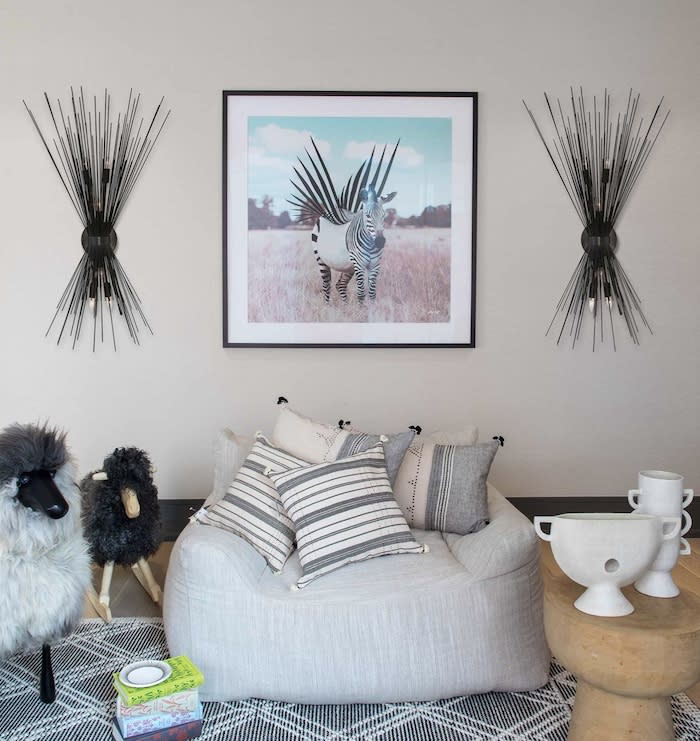
As you can see in the above photo, Padia adds toy rockers that match the color palette of the space and can be left out when kids are finished playing with them. You can find a lamb rocker similar to the ones pictured in Padia’s design right on Amazon.
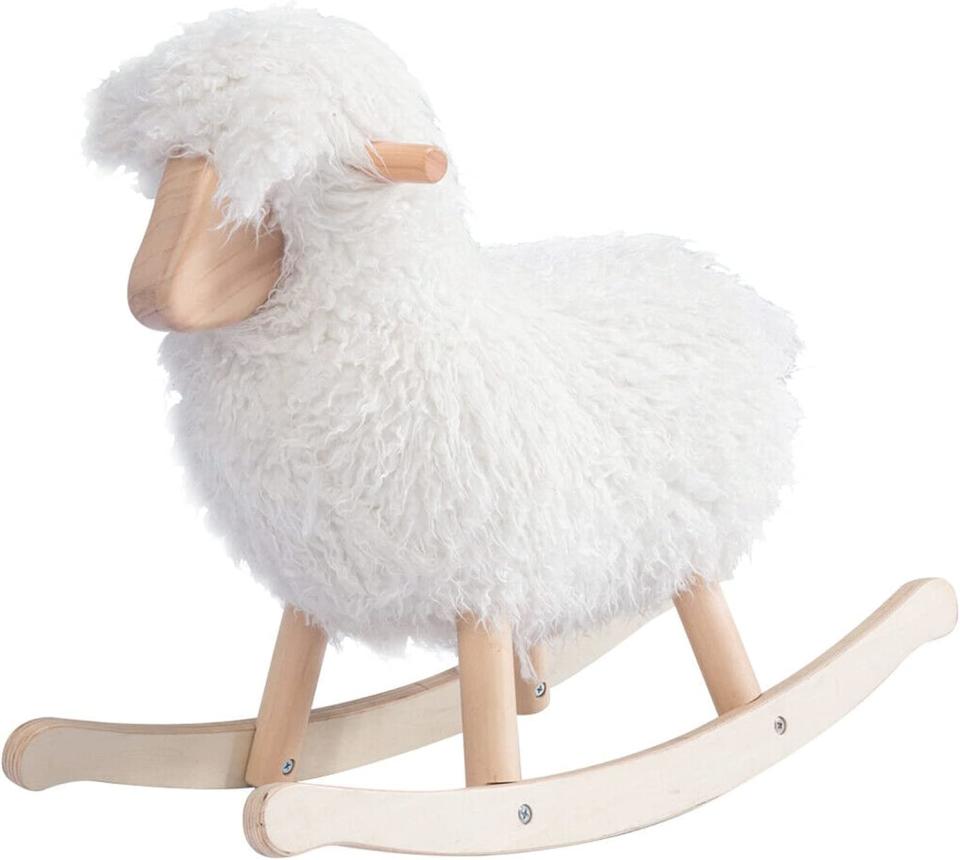
White Lamb Rocker
Padia also recommends choosing wooden toys instead of plastic. For example, she loves the wooden toys from Melissa & Doug, like this colorful wooden shape counter.

Counting Shape Stacker
2. Be mindful when purchasing storage
While there are lots of aesthetically-pleasing toys available that can be left out, that’s not the case for every toy. Some items need a space to be stored and rather than grabbing a generic plastic bin, Padia recommends storage solutions that are a bit more thoughtful. “I love the idea of doing a built-in wall unit and color coding organization, which also makes it super easy for the kids to help clean up,” Padia explains.

You can purchase a wall unit similar to the one in the example above on Wayfair.
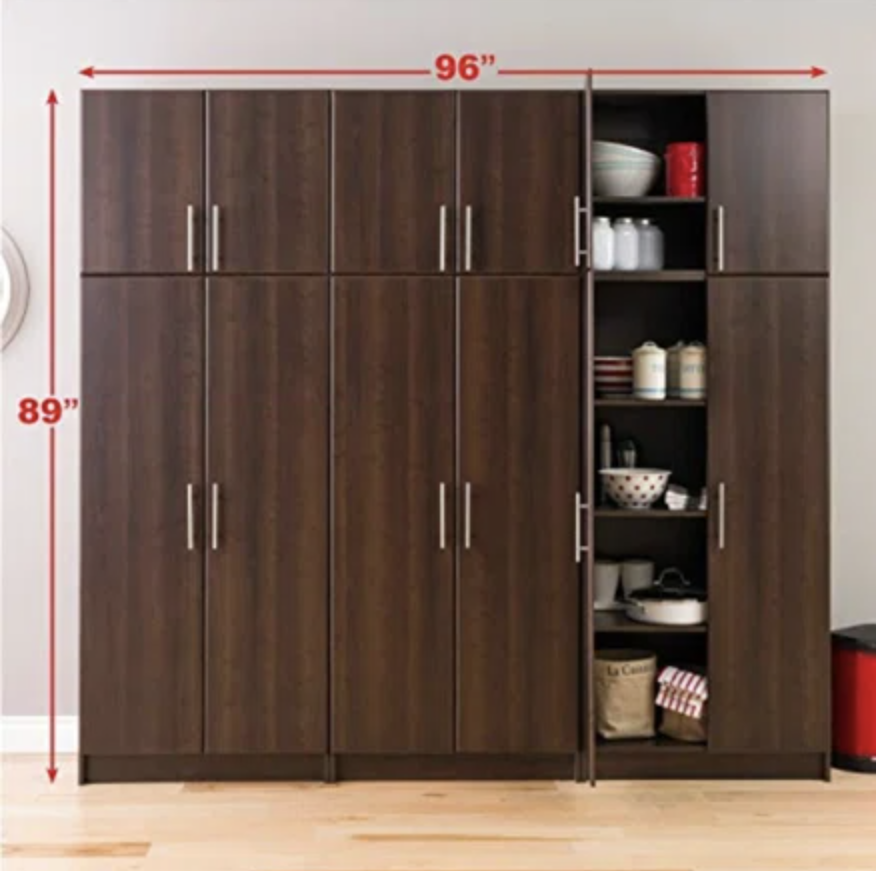
Waco 6-Piece Wall Unit
For items stored on a shelf or left out, Padia recommends purchasing neutral-colored shelves and organizing the items on them by color, or modern wire baskets. “When you look at a white shelf that’s color coordinated, it almost looks like a rainbow on the wall and I think it’s really important to keep in mind,” Padia says.
Padia loves to use these wire baskets from Open Spaces to store items that kids use frequently. They come in a wide variety of colors to suit the theme or palette or any space.
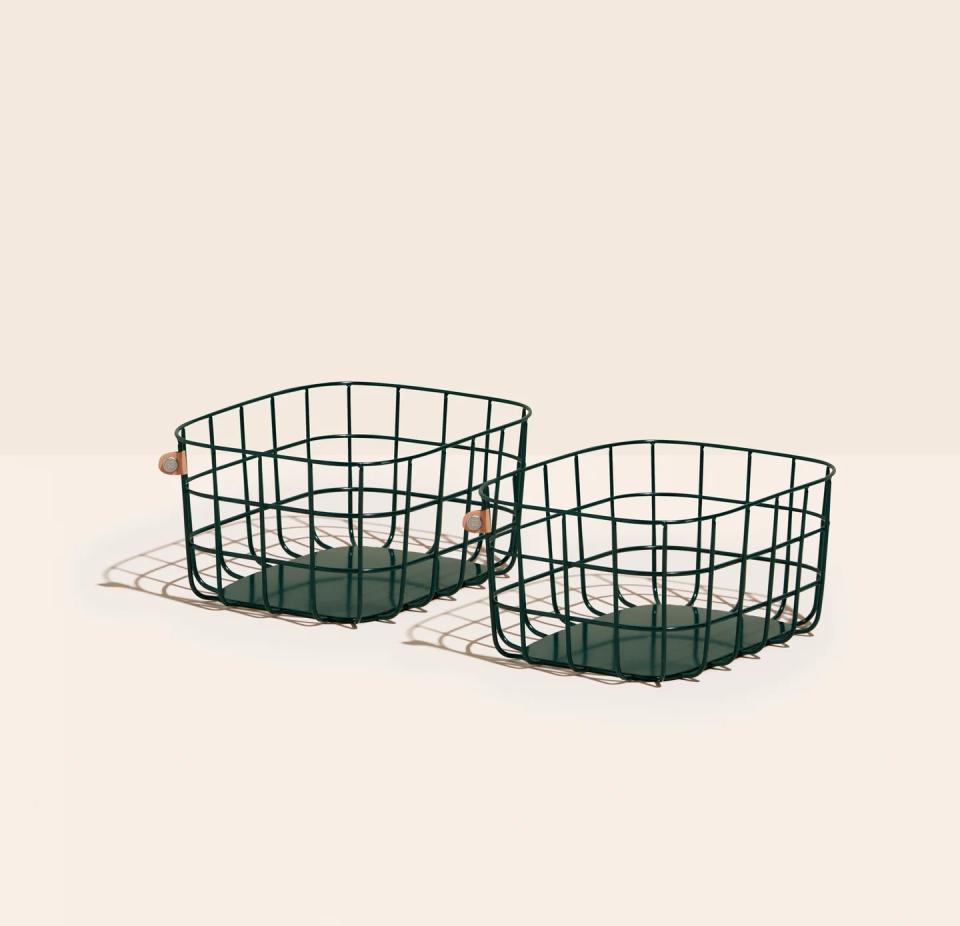
Wire Baskets, set of 2
3. Don’t save every piece of artwork
Art projects are a fantastic activity for kids but when your little artist brings home project after project, storing all of their masterpieces can get overwhelming. To cut back on the number of art projects you’re keeping in your house, Padia has two suggestions. First, you don’t need to keep every physical piece of artwork your kids create. Instead, “For flat artwork, I suggest to all my clients to take a picture of everything and start a folder on their phone,” says Padia. “I do one of two things with all the photos that we’ve taken: I either go to Artifact Uprising, which is this beautiful website you can use to create gorgeous coffee table books with the images of your childrens’ artwork, or size down the images you’ve taken and have them printed out like thumbnail size. Then you can create more of like a mosaic that becomes a big piece of art that you can put on the wall.”
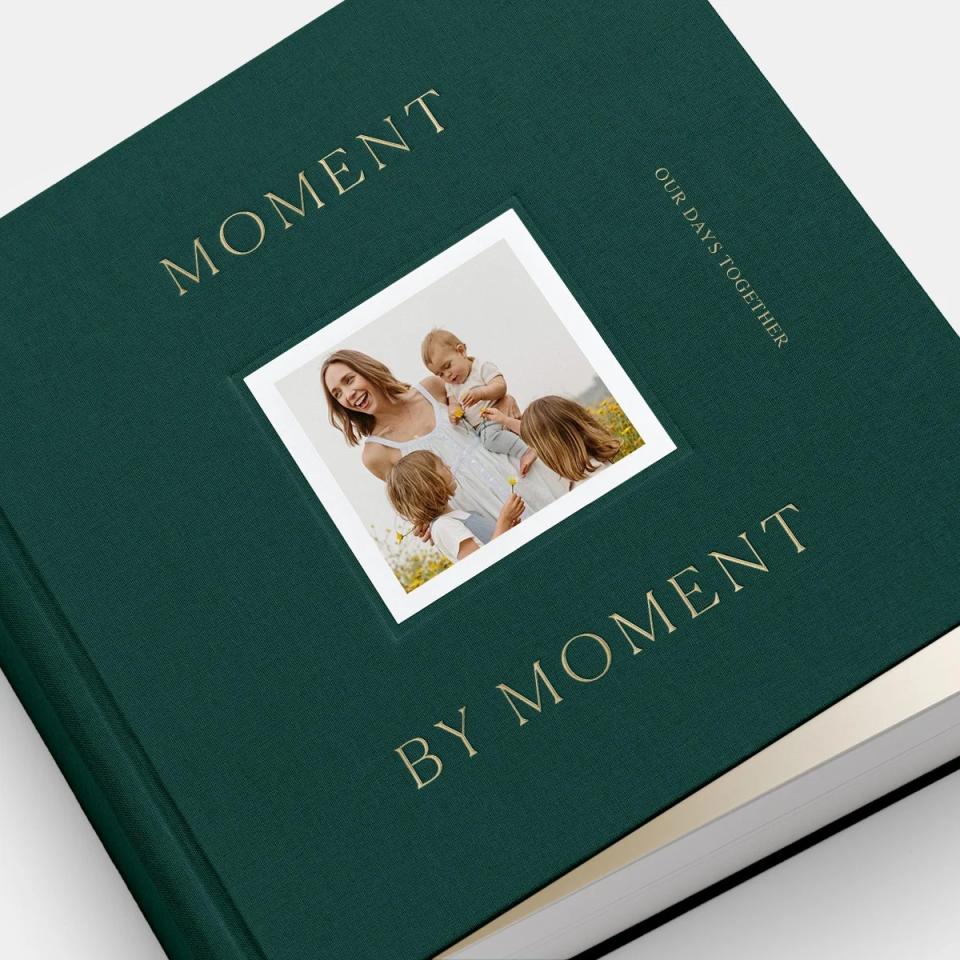
Custom Photo Book $207
4. Trendy decor is not your friend
While it may be tempting to try the trendiest new design aesthetic that’s trending on TikTok, for children’s playspaces, Padia actually recommends something a bit more timeless. “I don’t do trends,” Padia says. “Kids grow out of their play spaces as they evolve and you find yourself having to change them as your kids get older,” Padia explains. But steering clear of trends doesn’t mean dull and boring. “I think play spaces are a really fun place to take a risk, you know, to do something that you wouldn’t necessarily do in another part of your home.”
5. Color is not the enemy
While you may want to adhere to a more neutral color palette in most of the rooms in your home, children’s play areas should be the one exception. Paint is an easy and inexpensive way to breathe life into a room and as Padia says, “Paint in fun, bright colors rather than investing in any expensive, luxurious pieces or trendy decor because the space will most likely change again within a few years.”
You could even paint a mural on one wall, or better yet, let the kids paint something that inspires their creativity.
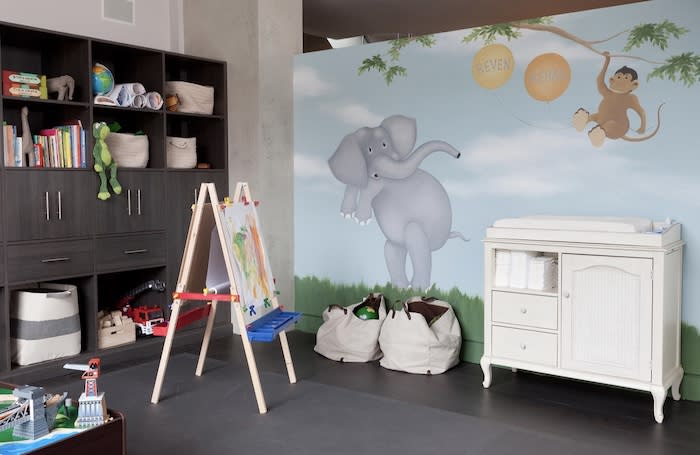
Hopefully tackling that long-awaited playroom reno seems a little less intimidating thanks to all of these great tips from Purvi Padia.
Best of SheKnows
Sign up for SheKnows' Newsletter.
For the latest news, follow us on Facebook, Twitter, and Instagram.